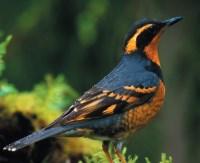Indian Valley Open Space Preserve
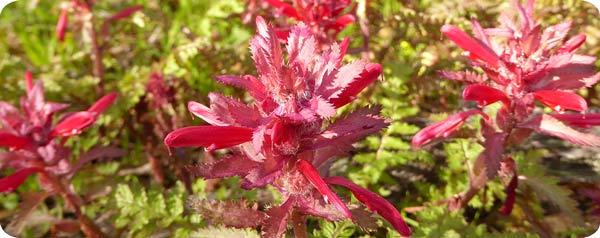
Indian Warrior flowering at Indian Valley
|
Jack Gedney ~ June 2017 Click here for printable pdf Indian Valley Open Space Preserve is a modest slice of forested foothills on the north side of Big Rock Ridge. That significant barrier to the south comprises the main topographical influence here, casting its long shadow over Indian Valley’s web of trails and modest hills, which rarely reach much over 400 ft. or so, although there are some steep sections. The combination of general shadiness, low hills, and intervening creeks creates ideal conditions for classic mixed evergreen forest, a plant assembly given its name by some of its main constituents: coast live oak, California bay laurel, and Pacific madrone. This high level of tree and understory diversity translates into a correspondingly rich community of bird species. The Rich Bird Life of the Mixed Evergreen ForestThis forest is prime habitat for several familiar year-round birds like oak titmice, chestnut-backed chickadees, and dark-eyed juncos. An understory rich with ferns and low plants provides cover for Bewick’s wrens and spotted towhees. Indian Valley is particularly fruitful for woodpeckers, from the small downy and Nuttall’s woodpeckers, to the chunky oak-specialist acorn woodpeckers, and most notably the tremendous pileated woodpecker. Indian Valley is probably the best place to see them in Novato (they are also present at Indian Tree and Olompali). One thing that will help you find them is if you familiarize yourself with their calls (visit allaboutbirds.com for recordings). Their loud trumpeting can carry a long way and is often given in flight, so you may pick them up flying across distant hills. While you’re at it, listen for the similarly carrying calls of white-breasted nuthatches (nasal honking) and red-shouldered hawks (insistently repeated cries of suitably hawk-like volume and aggression). The great time for listening to birds, of course, is spring. In addition to the standard year-round chatter, birds in spring launch into their more complex and musical repertoire as they establish territories and demonstrate themselves as exemplary physical specimens at the highest peak of strength and vigor to which a junco can ascend. First, in January and February, listen for local residents like oak titmice and dark-eyed juncos. Soon these songs are joined by the exuberance of Bewick’s wrens, the propulsive rattling of spotted towhees, and the melodious warbles of house and purple finches. In March and April, the chorus grows with the addition of migratory warbling vireos and orange-crowned warblers. Both of these birds are loud, musical, and abundant, but can often be rather shy of the spotlight as far as their human audiences are concerned and they are much more easily heard than seen from their concealed retreats in the canopy. Their partner in auditory strikingness and visual nothingness is the pacific-slope flycatcher, another plain and retiring summer bird, whose distinctive up-slurred whistles are a common sound of summer woods. These three will continue to sing throughout spring and into June, when many of the earlier resident nesters have significantly toned down their vocal pyrotechnics for the year. A few other summer birds are both audible and visible: two of particular note are the Wilson’s warbler, whose stuttering song can alert you to their presence, but whose brilliant yellow plumage and low, active foraging make them easier to see, and the ash-throated flycatcher, whose charming ker-Brick! shares some of the same pleasant squeaky quality found in quail or chickadees, reminiscent of some squeezable stuffed animals I had as a child – if you were designing some sounds to be emitted by an embraceable fuzzy thing upon receipt of an affectionate squeeze, you could do worse than to take these ash-throats as a model. Other Bits: Meadows, Coyote Bush, and Dark Bay WoodsMost of Indian Valley is clothed by this nice, diverse woodland, with cover and food to suit the tastes of a wide range of birds. But the preserve does have a few scraps of other habitats worth mentioning. Near the Lot 7 sports fields and the other eastern areas on College of Marin property are some relatively open meadows, with patches of coyote bush here and there. These meadows provide hunting areas for American kestrels and white-tailed kites, and the coyote bush thickets give shelter to quail, towhees, and summertime blue-gray gnatcatchers. If you hear a quirky high-pitched wheezing pouring out of the corners of an oak or shrub, look closely for this last-named bird, a notably wide-eyed and irrepressible bundle of attitude. At the opposite end of the spectrum, Indian Valley’s darkest and coolest corners, such as the Ad & Gloria Schwindt Trail near the northern end of the fire road, where the woods become dense and bay-dominated, are prime places to look for varied thrushes in winter. These mysterious robin relatives may be more or less absent in some years and quite common in others, but this is one of the best places in town to look for them. In a thrushy year, they might appear throughout the preserve, but their stronghold is wherever things are shadowy, damp, and redolent of mystery. Varied thrushes travel to the coastal rainforests of the northwest for the nesting season, but I remember one particularly striking day in December, when some combination of warm temperature and impending rain struck the Indian Valley thrush population into their strange and otherworldly song, resonant metallic quavers echoing through the bays. Practical DetailsHow to Get There: Drive to the western end of Ignacio Dr, which enters the Indian Valley Campus of College of Marin. Note that most lots require paid parking Monday-Saturday while the college is in session. The small lot 7 near the ball fields at the end of the road is open for public parking, but can fill up on weekend mornings when sports events are occurring. One suggestion: arrive early at lot 7 on Wednesday or Saturday morning, tromp around for a few hours, then stop in at the farm stand (open 10–2) next to the sports fields to get some fresh produce from the on-site organic farm. Another suggestion: the flat, central Indian Valley Fire Road emerges into the quiet Indian Valley neighborhood on the northern edge of the preserve. There is essentially no car parking on this end, but it’s a pleasant bike ride from anywhere in central Novato out to this somewhat rural edge of town, and then through the preserve on the level fire road. Leave your bike by the sports fields and continue on foot to find some birds. Rules & Access: Indian Valley is a Marin County Open Space Preserve and so is open to free public access 24 hours a day, and has some handy amenities such as garbage cans, restrooms, and tables found at the adjacent public sports fields and College of Marin campus. Leashed dogs are permitted on trails; bikes are permitted on the Indian Valley Fire Road. As with all Open Space Preserves, excellent downloadable maps are available at marincountyparks.org or you can consult our favorite printed map, Trails of Northeast Marin by Pease Press. - Return to Birding Sites Homepage - |
Band-tailed Pigeon |
|
|
|
|
Red-shouldered Hawk |
|
|
|
|
|
|
|
|
Varied Thrush |


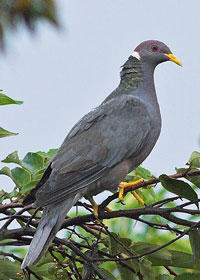
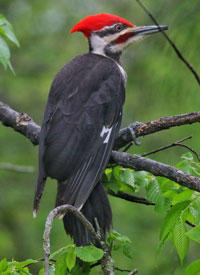 Pileated Woodpecker
Pileated Woodpecker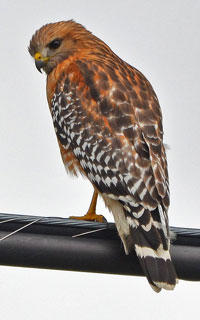
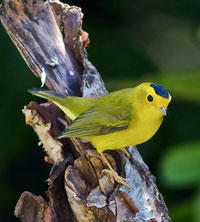 Blue-gray Gnatcatcher
Blue-gray Gnatcatcher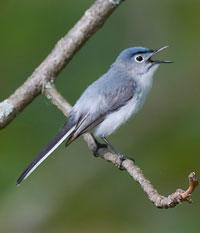 Blue-gray Gnatcatcher
Blue-gray Gnatcatcher